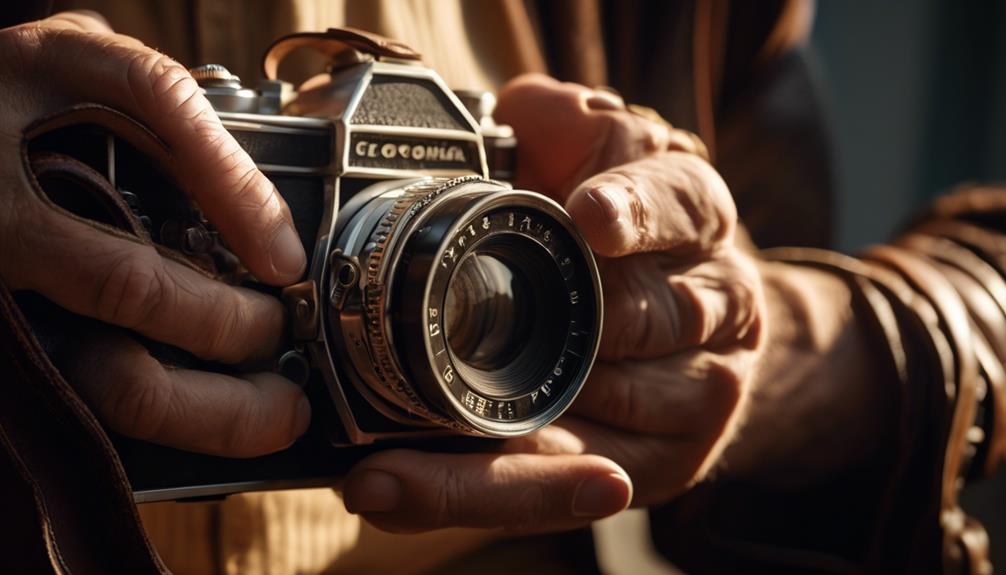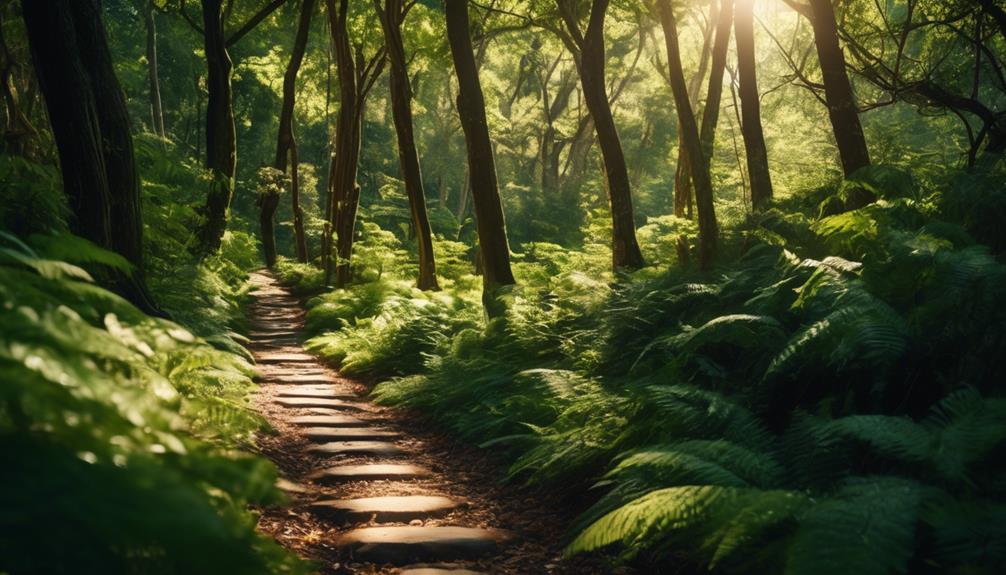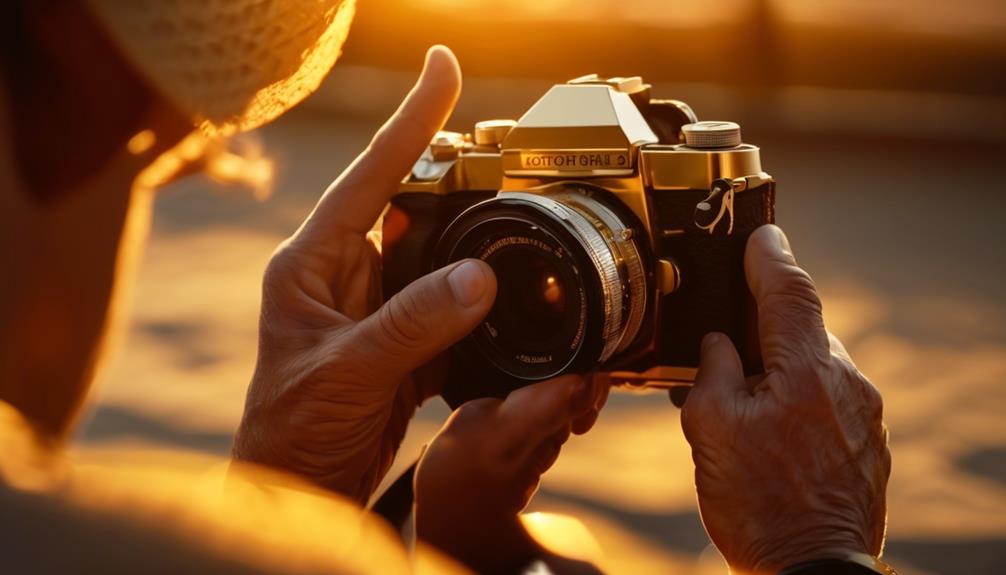Please note this post may contain affiliate links picked by me (Jay) that I have deemed may be of interest or relevant to you the reader of this.
These links do not affect the cost of the thing if you decide to purchase but i may get a little money if you choose to purchase.
For more information on my affiliate link policy click here.
You may be thinking, 'Why do I need to craft a distinctive photography style? Isn't it enough to just take good pictures?' Well, let me tell you, my friend, having a distinctive style is what sets you apart from the sea of photographers out there. It's what makes your work instantly recognizable and memorable.
In a world where everyone has a camera in their pocket, it's crucial to stand out. So, how can you do it? In this discussion, I'll share with you some key tips that will help you:
- Embrace your unique perspective
- Experiment with different techniques
- Study and learn from other photographers
- Develop a signature editing style
- Most importantly, trust your instincts and follow your passion.
But I won't give it all away just yet, because there's so much more to discover.
Key Takeaways
- Find inspiration everywhere and embrace your unique perspective to develop a personal brand that reflects your personality and artistic voice.
- Experiment with different techniques, such as lighting, composition, long exposure, double exposure, and macro photography, to create visually striking and unique images.
- Study and learn from other photographers, observing their techniques, analyzing portfolios, and understanding the thought process behind their photographs to gain inspiration and broaden your own skills.
- Develop a signature editing style by experimenting with color grading techniques, refining your editing workflow, paying attention to details, and creating a consistent aesthetic across your portfolio to reflect your artistic vision.
Embrace Your Unique Perspective
When it comes to photography, embracing your unique perspective is the key to capturing truly captivating and memorable images. Finding inspiration is essential in developing your own photography style. As a photographer myself, I believe that inspiration can be found everywhere – in the beauty of nature, the hustle and bustle of a city, or even in the smallest details of everyday life. It's about seeing things differently and being open to new ideas.
Building a personal brand is another crucial aspect of embracing your unique perspective. Your photography style should reflect your personality, your vision, and your artistic voice. It's about creating a distinct identity that sets you apart from others in the industry. Your brand should evoke emotions and leave a lasting impression on viewers.
To build your personal brand, start by defining your niche. What subjects or themes resonate with you the most? Are you drawn to landscapes, portraits, or street photography? Once you've identified your niche, focus on honing your skills in that area and developing a signature style. Experiment with different techniques, lighting, and composition to create a unique look that's instantly recognizable as your own.
Don't be afraid to take risks and push the boundaries of traditional photography. Innovation is key to standing out in a competitive industry. Embrace new technologies, explore different perspectives, and constantly challenge yourself to think outside the box. By doing so, you'll not only create captivating and memorable images but also establish yourself as a forward-thinking and innovative photographer.
Experiment With Different Techniques
To truly elevate your photography skills, it's essential to fearlessly explore and experiment with a wide range of techniques. As a photographer, I've found that pushing the boundaries and stepping out of my comfort zone has allowed me to discover new ways of capturing moments and expressing my unique vision.
Here are five techniques that have helped me in my journey of experimentation:
- Lighting techniques: Exploring different lighting setups can completely transform the mood and atmosphere of your photographs. Whether it's natural light, artificial lighting, or a combination of both, playing with shadows and highlights can add depth and dimension to your images.
- Composition exploration: Composition is the backbone of a captivating photograph. By experimenting with different angles, perspectives, and framing techniques, you can create visually striking and dynamic images. Don't be afraid to break the rules and try unconventional compositions to add interest and intrigue to your work.
- Long exposure: Long exposure photography allows you to capture movement in a unique and mesmerizing way. By using a slow shutter speed, you can create stunning images of flowing water, light trails, or starry skies. This technique requires patience and practice, but the results are often breathtaking.
- Double exposure: Double exposure is a technique where two or more images are combined in-camera to create a single, dreamlike composition. By layering different elements together, you can tell a story or evoke a certain mood in a visually compelling way.
- Macro photography: Macro photography opens up a whole new world of details and textures that are often overlooked. By getting up close and personal with your subject, you can capture intricate patterns, textures, and colors that aren't visible to the naked eye.
Study and Learn From Other Photographers
Studying and learning from other photographers is a valuable way to expand your knowledge, gain inspiration, and refine your own photography style. By observing techniques and analyzing portfolios, you can uncover new approaches, learn from different perspectives, and discover innovative ways to capture the world through your lens.
To help you get started on your journey of studying and learning from other photographers, I have compiled a table showcasing three influential photographers and their unique styles:
| Photographer | Style | Notable Works |
|---|---|---|
| Ansel Adams | Landscape Photography | "The Tetons and the Snake River" |
| Annie Leibovitz | Portrait Photography | "John Lennon and Yoko Ono" |
| Steve McCurry | Photojournalism | "Afghan Girl" |
By studying the works of these photographers, you can gain insights into their techniques, composition choices, and use of light. Pay attention to how they frame their subjects, the emotions they evoke, and the stories they tell through their images.
Remember, the goal is not to replicate their work, but rather to understand the thought process behind their photographs. By doing so, you can incorporate these learnings into your own photography style, adding a touch of uniqueness and innovation.
Additionally, don't limit yourself to just studying established photographers. Explore the work of emerging talents and photographers from different genres. This will expose you to a wider range of styles and ideas, sparking your creativity and helping you develop your own distinct photography style.
Develop a Signature Editing Style
Developing a signature editing style is an essential step in establishing your unique artistic voice as a photographer. It's through the editing process that you can truly bring your vision to life and make your images stand out from the crowd. To help you develop a distinctive editing style, here are some key tips:
- Experiment with different color grading techniques: Color grading can greatly impact the mood and tone of your photographs. Play around with different color palettes and adjustments to find the one that best represents your artistic vision. Whether you prefer vibrant and saturated colors or a more muted and desaturated look, finding your unique color grading style can help you create a cohesive body of work.
- Refine your editing workflow: Time is precious, especially when you have a large volume of images to edit. Optimizing your editing workflow can help you save time and be more efficient. Consider creating presets or using batch processing techniques to apply consistent adjustments to multiple images at once. This won't only save you time but also allow you to develop a consistent editing style across your work.
- Pay attention to details: The devil is in the details, and this holds true in the editing process. Take the time to fine-tune your images by adjusting exposure, contrast, and sharpness. Pay attention to small imperfections and distractions that can be easily removed or fixed. By paying attention to these details, you can elevate the overall quality of your work and make it more visually appealing.
- Develop a consistent aesthetic: Consistency is key when it comes to establishing a signature editing style. Aim to create a cohesive look across your portfolio by using similar editing techniques and presets. This will help viewers recognize your work and make it more memorable.
- Trust your instincts: Ultimately, developing a signature editing style is about trusting your instincts and staying true to your artistic vision. Don't be afraid to experiment and take risks with your editing. Embrace your unique perspective and let it shine through in your post-processing.
Trust Your Instincts and Follow Your Passion
As I continue to refine my editing style and develop a consistent aesthetic, I have come to realize the importance of trusting my instincts and following my passion. In the world of photography, finding inspiration and overcoming creative blocks are crucial for creating a distinctive style that sets you apart from others.
When it comes to finding inspiration, I believe it's important to explore various sources. Whether it's browsing through photography books, visiting art galleries, or simply taking a walk in nature, exposing yourself to different forms of art and beauty can spark fresh ideas and ignite your creativity. I have found that even mundane everyday objects can become the subject of captivating photographs if you look at them from a unique perspective.
However, there are times when creative blocks can hinder our progress. It's essential to recognize that these blocks are normal and temporary. Instead of forcing yourself to create, take a step back and engage in activities that bring you joy. It could be listening to music, reading a book, or spending time with loved ones. By giving your mind a break, you allow space for new ideas to flow in naturally.
To summarize the importance of trusting your instincts and following your passion in photography, I have created a handy table below:
| Trust Your Instincts | Follow Your Passion |
|---|---|
| – Experiment with different techniques and compositions | – Shoot subjects that truly inspire you |
| – Trust your gut when it comes to editing choices | – Pursue photography projects that align with your interests |
| – Embrace your unique style and don't conform to trends | – Continuously learn and grow as a photographer |
Frequently Asked Questions
How Can I Find My Unique Perspective as a Photographer?
Finding my unique perspective as a photographer involves exploring different genres and embracing imperfections. It's about experimenting with different techniques, angles, and lighting to capture moments that tell a story and evoke emotions.
What Are Some Unconventional Photography Techniques I Can Experiment With?
When it comes to photography, I'm always on the lookout for unconventional techniques to experiment with. Trying out new and creative composition techniques can really elevate your images to the next level.
Whether it's using a prism to add unique reflections, playing with double exposures, or experimenting with long exposure light painting, there are endless possibilities to explore.
These unconventional techniques allow me to push the boundaries of my photography and create truly distinctive and innovative images.
Where Can I Find Resources or Courses to Study and Learn From Other Photographers?
When it comes to finding resources or courses to study and learn from other photographers, there are plenty of options available. Online resources have become a treasure trove of knowledge, with websites and platforms offering courses, tutorials, and even mentorship programs.
From specialized photography schools to online learning platforms, there are endless opportunities to expand your skills and learn from the best in the industry.
How Can I Develop a Signature Editing Style That Sets My Photos Apart?
Developing a signature editing style that sets my photos apart is all about enhancing visual storytelling.
It's like painting a canvas with my unique brush strokes, adding depth and emotion to each image.
By experimenting with different editing techniques and tools, I can create a style that reflects my artistic vision.
It's about finding a balance between consistency and innovation, while always striving to push boundaries and surprise my audience.
The key is to be bold, be true to myself, and let my creativity shine through.
What Steps Can I Take to Trust My Instincts and Overcome Self-Doubt as a Photographer?
Trusting my instincts and overcoming self-doubt as a photographer is a journey I continue to navigate. It's about finding the confidence to follow my gut, to trust that I've a unique perspective to offer.
By embracing my own style and vision, I can break free from doubt and create work that truly speaks to me and my audience.
It takes practice, self-reflection, and a willingness to take risks, but the rewards are worth it.
Conclusion
In conclusion, remember that your photography style is a reflection of your unique perspective and passion. Embrace it wholeheartedly and don't be afraid to experiment and learn from others.
Develop a signature editing style that sets you apart from the rest. Trust your instincts and follow your heart. As the saying goes, 'Photography is the art of capturing souls,' so let your images speak volumes and touch the hearts of those who view them.
Keep shooting and keep creating magic!


